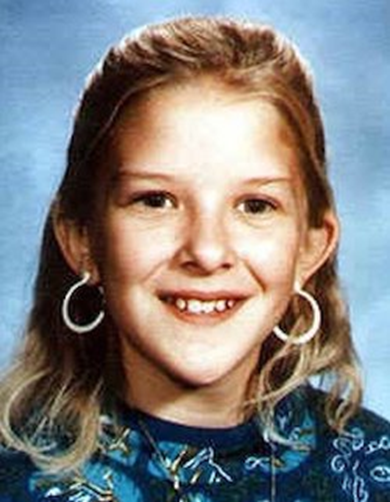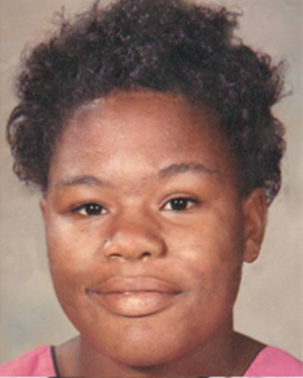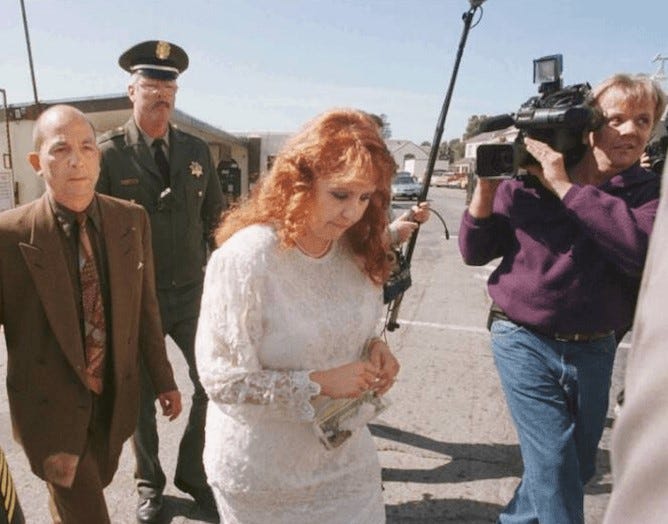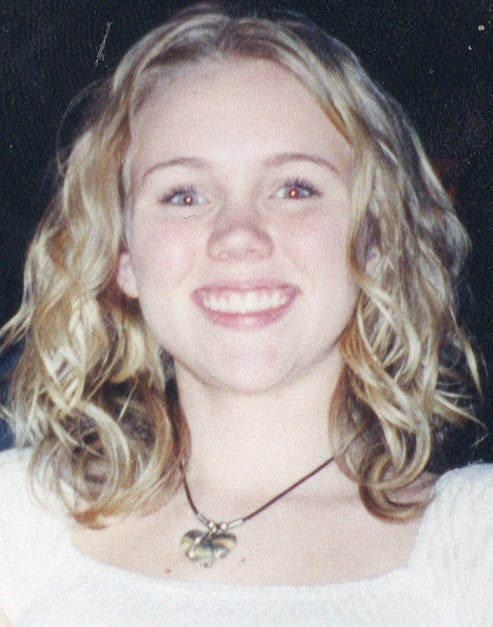The Tragic Unsolved Murder of Laura Parker
Laura Parker was a quiet fourteen-year-old girl, who lived with her parents in Lindenhurst, New York. She had been in choir, active in church, a softball player at her high school. She disappeared on May 25, 1984. Most people believed that she was a runaway. Laura’s parents wondered where she was, searching everywhere for her. A few months after she went missing, Laura Parker’s remains were discovered a few miles from her family home. Her case went cold, and nobody was ever arrested for her murder.
Laura Parker’s story is a tragic one, as her family never got to understand what had happened to her all those decades ago. Residents of Lindenhurst were mainly unhelpful at the time of her disappearance, and many of the students at the high school were unwilling to talk to the police.
There were a great deal of conspiracy theories surrounding her case, and rumours flying around about what had happened to the young teen. People claimed that she had overdosed, while others claimed she was murdered. The police said it was natural causes. But what truly happened to young Laura Parker? It is nearly the fortieth anniversary of Laura’s death, and there are still so many questions surrounding her death.
On May 25, 1984, Laura’s father, Jim, woke up his daughter for school. He worked at JFK airport, as a maintenance worker, and he had to head out early. When he left at 5:30 AM, Laura was just getting out of bed, and was about to get ready for school. She liked to blow-dry her hair before school. That was the last time that he would ever see his daughter.
When Laura Parker left for school that morning, she was wearing white jeans, and a green and white striped tank top with the words ‘hang 10’ on the front. Laura’s mother clearly remembered what her daughter had been wearing that day, because she had tried to convince Laura to wear something warmer, as it was quite chilly out.
Laura’s school day had been uneventful. Witnesses had seen Laura at school, at the last bell. She was supposed to go to softball practice after school, but she never arrived. This was unusual for her, because it wasn’t like Laura Parker to skip class — or practice. But she didn’t show up for practice that day, which took place half an hour after school let out.
Laura’s family became concerned about her, when she didn’t show up at home that evening. Her parents tried to find out where she had gone, to no avail. They called the Suffolk County Police department the next day, to report her missing. They were concerned about Laura, unsure why she would just disappear like that.
Laura Parker was born on July 26, 1969. She had lived in Suffolk County, New York with her parents (Jim, and Patricia). Laura had been in the ninth grade, at Lindenhurst High School, in Long island. She had loved playing softball. Laura had sung in choir at school, and had been interested in a singing career. She’d been involved with her church.
Once Laura had been reported as a missing person, there were multiple local searches conducted, but she was never found. Laura’s parents were frantic, determined to find their daughter. However, not everybody in Lindenhurst were convinced that Laura Parker was a missing person — or that she was potentially abducted. Some of the Parkers’ neighbours believed that the young girl had simply run away from home. They decided against joining in in the local searches, which only angered and confused Laura’s parents. When some of the neighbours spoke to the media, they spoke fondly of Laura. She was a friendly, quiet girl. The neighbours talked about how they would see her walk to and from the school bus, and how she’d be outside with her friends. And yet, many of them were resistant to the idea of helping out with the search efforts.
Laura Parker didn’t seem like the kind of girl to run away from home. She had ties to the community. Friends at school, involvement with sports teams, and church. Laura seemed close with her parents, and her younger brother. Jim Parker had told her she cold host a party at the house in the near future, which was something she had been looking forward to. And she had plans to visit the Adventureland amusement park with one of her friends. Laura Parker’s diary was found in her school locker. She had also left her purse at the school the day that she went missing, which her parents found odd.
After Laura disappeared, her parents began handing out flyers with their daughter’s information on it, determined to bring awareness to her missing persons case. At one point, a truck driver who’d seen the flyer, had contacted Jim Parker. The driver believed that he’d seen Laura Parker when he’d been in Manhattan. Jim had been filled with hope. He’d gone out to Manhattan, to try and find her. Jim Parker spent a week walking up and down the dangerous New York city streets — determined to find his daughter. He never found Laura. He finally had to admit defeat, and return home.
A month after Laura had gone missing, the Parkers received an unusual phone call. The person on the other end had been a young girl, and Jim had thought that it was Laura. The voice had said, ‘Daddy, will you come and get me?’ He had shouted out Laura’s name. But then, the person on the other had started laughing. It had been a prank call from a group of young girls. They’d quickly hung up.
Though the police had tried to speak with the students at the high school, they had a difficult time getting much information from them. Most of the high school students at Lindenhurst High School weren’t especially cooperative when it came to Laura Parker’s disappearance. Jim Parker had become aware that some of the parents had told their children not to speak with the police, or become involved in any way with Laura’s case. At least one high school teacher was warned that they needed to keep quiet about her disappearance, as well. For whatever odd reason, the residents of Lindenhurst had closed ranks.
Some of the high school students had been uncomfortable with talking to the police, because of the way they were questioned. The police would pull kids out of the classroom in front of all their classmates. Then, the police would question the students without their parents present. Some students were questioned multiple times in this fashion. They would also go to Lindenhurst students’ houses, and question them repeatedly about Laura, trying to get as much information as they could.
The few students who had spoken to the police, had told them that Laura had been arguing lately with her father, that things had not been good in the Parker residence. They claimed that Laura had been troubled, that she had planned to run away from her parents. Multiple students had said that they’d seen Laura after school the day of her disappearance, and that she had told people that she didn’t want to go home. Had this been the reason for her disappearance? Had Laura Parker gotten into an argument with her father, and had simply decided to not go back home that afternoon? Teens fight with their parents all the time, but they don’t always end up running away from home. Sometimes, they stay out late, not wanting to face their parents. Most of them end up going back home, and working things out. This might’ve been the case with Laura. She could’ve skipped softball practice, in favour of hanging out with her friends.
Although the Lindenhurst students had informed the local police that Laura had been fighting with her father, there are some who doubt if this had been the case. Jim Parker had been a dedicated, hardworking father, who would do anything for his young daughter. When Jim Parker had returned home from his long shift that day, he had discovered that Laura was missing. Jim Parker had put all of his energy into finding Laura. He had cared so much, doing everything he could do to get Laura back.
The FBI had been briefly involved in Laura Parker’s disappearance. They spent a week in Lindenhurst — enough time for them to determine that she had not been abducted. Once they had established that she hadn’t been abducted, the FBI decided to get out of Lindenhurst, leaving the rest of the investigation to the local authorities.
On September 10, 1984, about four months after Laura disappeared, her remains were finally discovered. There was a local area nicknamed ‘The Hut’ by local kids and teens. It was a vacant lot located on North Monroe Street, and was located only about two miles away from Laura’s home. Laura’s body had been found in the hole, which was 4.5 feet deep, and 11 feet wide. The Hut had plywood walls, was covered with cardboard boxes, and it had an entrance on the top. Kids would play in the area, as well as ride their bikes. Some older kids would smoke nearby.
The day that Laura’s remains were discovered, three twelve-year-old boys had gone down into the hole, and were trying to clear out the Hut, to build a fort. As they were pulling out some of the garbage, they found a girl’s shoe. That find alone wouldn’t have been too odd, as the hole had trash thrown into it. But as the boys continued to remove more debris, they made a horrifying discovery — Laura Parker’s skull. They quickly scrambled out of the Hut, and went to tell their parents.
Laura Parker’s remains had been rolled up in a red carpet, and covered with cardboard boxes, and plywood. It had been months since her disappearance, and unfortunately, Laura’s body was so badly deteriorated, that identifying her had become quite difficult. Authorities needed to use her dental records to formerly identify her. She had still been wearing the same clothes, that she’d been wearing on day she was missing.
When they were given the news, Laura’s parents were devastated. During those four months, they had been doing everything to try and find their daughter. Her family members had been hoping desperately that she would be found alive. It was such a huge blow to know that Laura had been dead the whole time — and that she had been only two miles away from home. Whoever had killed her, had callously left her body in the trash-filled hole.
The Parkers wanted to know what had happened to their daughter. Her body had been examined, but the authorities were unable to determine Laura’s cause of death. It is unknown how much forensic testing they did, or if they took any DNA samples from her remains for later testing. Laura Parker’s death was not ruled as a homicide, instead, it was determined that she had died of ‘natural causes’. Once the authorities had finished with their examination, Laura Parker was cremated. Her parents buried her ashes at St. Boniface Episcopal church.
John F. Gallagher (Suffolk Chief of Detectives), had been interviewed for the local newspaper, ‘News Day’. He’d said the following: ‘The feeling is she may have died of natural causes. From the remains, there is nothing to indicate fractures, or anything like that. We’ll have to wait for the x-rays.’
There were so many unanswered questions surrounding the young teen’s death. What had happened to Laura Parker that day after school? The ninth grader had not been known to be a troublemaker. Whatever had happened, had taken place that day from when school let out, to before the softball practice that Laura had missed. Had she walked to the Hut, or had someone offered her a ride? Had anyone at the school seen Laura leave the school property?
Who had killed Laura? Was it someone she knew from school? A friend? Or was it a complete stranger, who had lured her away from the school? Had it been a trusted adult, like a teacher, or a parent? Or could it have been a kid, around the same age as Laura? Why had she been murdered? Had it been accidental, and someone had covered up her body, in fear of being punished for her death? Or had this been a calculated murder? Why would someone kill Laura Parker? Had she simply been in the wrong place, wrong time? Did she know something she wasn’t supposed to, or seen something — and someone was trying to silence her? Did Laura fit a type, and the killer chose her because of her appearance? Was this personal?
Laura’s parents grieved for a long time, plagued with the knowledge that they would never see their daughter again. Her death ripped a hole in their lives, one that could never be filled. Jim and Patricia Parker had tried for years to have their own child. They had an adult child with special needs, who lived in a hostel. But they had wanted to have another child. After six devastating miscarriages (and their infant dying at a few days old), they had finally decided to adopt. They had loved her dearly. And then, they had lost their daughter in a horrifying manner. The Parkers later had another child — a boy named James Jr. The Parker family had to continue on with their regular lives, never being able to fully move on from her death, never knowing what had happened to her.
Patricia Parker had had an unusual dream the night before her daughter had gone missing. The dream had told Pat, that she would never see her daughter again. She’d tried to shake it off once she’d woken up, as it had been a regular day. As she’d said goodbye to her daughter, Pat had been unaware that it would be the last time she’d ever see Laura again. She was also unaware just how much truth had been in her strange dream. It is not the first time a loved one has described having an odd dream, or a feeling shortly before their family member disappears. Perhaps it was mother’s intuition, or something else.
As time went on, and the Parkers continued to fight to have their daughter’s death properly investigated, the police started to believe that maybe Laura’s family were onto something. Though the police had initially believed her death to be natural causes, it was clear that something had happened to her. Laura had been found rolled up in the carpet. She had not done that to herself. They had initially thought that she had jumped down into the Hut, or accidently fallen. But upon further inspection, it was determined that she could not have landed in that position on her own. So, it stood to reason, that someone had done that to Laura. They weren’t certain if she had died in the hole, or if her body had been placed there after her death. There was so much more to the story. If only there had been a bigger effort to investigate the moment that Laura had been reported as missing — or when her body had been discovered.
One person who had been interviewed multiple times by the police, was Laura Parker’s ex-boyfriend. They had been dating up until three weeks before her disappearance, and their relationship had been short-lived. Was it possible that her ex-boyfriend had been the one responsible for Laura’s death? No charges were ever laid, and the police moved on to question other people in the case.
Years after her murder, a former resident of Lindenhurst had interviewed Laura’s former boyfriend, in hopes of getting some more insight into the story. There was little information about the case at the time, and they wanted to understand it better. The Reddit user (who had been frequenting Facebook group), spoke to Laura’s former boyfriend (who went by ‘P’).
He said that he’d been the same age as Laura, and it had been a fairly innocent relationship. They had held hands, and met at her locker. They had only dated for about a month. They had never even met each other’s parents, or anything — and it wasn’t considered a serious relationship, being that they were only fourteen years old.
He did say that Laura had talked about running away from home a few times, but it had been joking comments, and didn’t appear to be serious comments. P had started doing drugs recreationally at that time, though Laura was not a drug user. There were quite a few older kids who would sell drugs to kids, and there had even been one older student who had been caught selling drugs in a playground. P and Laura had broken up after a few weeks, though he couldn’t recall the exact reason.
Laura’s boyfriend, P, recalled that shortly after they’d broken up, he’d heard a rumour that Laura had gotten into a fight with a girl. Maybe this had something to do with her disappearance.
P had been friends with the local drug dealers. One of them, known as ‘A’, had been the dealer that was caught selling drugs in a playground. A’s best friend was Laura’s boyfriend’s dealer. P had gone to his dealer’s house many times, to buy drugs from the dealer’s bedroom. He recalled that the dealer had a red rug on his bedroom floor. However, when he visited after Laura’s disappearance, he noticed that the rug had been replaced with a different coloured rug. Normally, something like a new rug wouldn’t mean much. However, Laura’s remains had been found rolled up in a red rug, discarded in the Hut. It seemed alarming to P at the time, but he kept the information to himself.
Following a stint in jail, P later returned to Lindenhurst in the ’90s. At that point, he chose to go to the police, and tell them about the rug at the dealer’s house. His former dealer was a notorious drug dealer, who was involved with a local gang at that point. The police were not too interested in the story, and nothing seemed to come of it.
Laura’s mother, Pat, had been horrified by how little the people in Lindenhurst seemed to care about her daughter’s death. They were quick to say that Laura should rest in peace, but they seemed otherwise indifferent. Locals clammed up, the police were reluctant to solve the murder. Neighbours who had known the Parkers for years, had refused to help search for the missing girl, insisting that she was a runaway. Lindenhurst didn’t come together, consoling the grieving Parker family, offering to help them in whatever they needed. The townspeople seemed hostile against them — mocking Laura’s death, calling the Parker family home with nasty prank calls. She was not grieved by the town, and Laura Parker soon faded into obscurity.
Laura Parker was not the only young local girl who had gone missing from the area, ending up murdered in a grisly fashion. There had been others. And it’s possible that these other girls were somehow connected to Laura’s case.
Fifteen-year-old Kelly Morrisey had gone missing from nearby Lynbrook, New York. On June 12, 1984, she had left home to go to the video store. Her mother reported her missing when Kelly never came back home. She had initially believed that Kelly had gone to stay at one of her friends’ houses, but she soon learned that that wasn’t the case.
The police believed that Kelly had not been a runaway. She’d never picked up her last paycheck at work, so she had no money. All of her possessions had been left at the house, and her clothes had been laid out on the bed for the next day. Kelly was about to take a school exam, but she never got the chance. Kelly Morrisey has never been seen again, and is presumed dead.
On November 10, 1984, sixteen-year-old Theresa Fusco went missing. She had been one of Kelly Morrisey’s friends, and she’d worked at the local Hot Skates as a snack bar attendant. She had been fired the night of her disappearance, after getting into an argument with her manager. Theresa had left the roller rink around 9:45 PM, but she never made it home.
Her family had been frantic to find her. They’d called around, thinking that she might’ve gone to a friend’s house. But they couldn’t find her anywhere. They reported Theresa as a missing person. Theresa’s friends had been determined to find her, and they held local searches to try and locate her. But just like Kelly, Theresa was nowhere to be found.
On December 5, 1984, Theresa Fusco’s remains were found near the Long Island Rail Road tracks close to her family home. She had been covered up with leaves, and a wooden pallet. Theresa had been beaten, strangled with a ligature, and raped. Her death was devastating to the Fusco family.
The police did an investigation, and brought in multiple persons of interests for polygraph tests, and interrogations. In 1985, three men were arrested for Theresa Fusco’s murder. Their names were Dennis Halstead, John Restivo, and John Kogut. Restivo had been interrogated for eighteen hours. Kogut was later brought in, and interrogated for fifteen hours. This resulted in a taped confession, which was later determined to be coerced. They were given a thirty to life sentence for Theresa’s murder, and rape. However, after nineteen years in prison, all three men were exonerated, and were released from their prison sentences. The NY Innocence project aided in getting the three men out of prison, because a vaginal swab was tested for DNA, and was able to definitively prove that none of the three men who’d been arrested, had killed her. There had been evidence of coercion, and planted DNA evidence. The three men were failed by the justice system, and the botched police investigation, just as much as Theresa Fusco. Her killer still walks free.
The local deaths didn’t stop with Laura, or Kelly, or Theresa. On March 26, 1985, nineteen-year-old Jacqueline Martarella went missing. She had been from Oceanside, New York. The last time that Jacqueline was seen, was when she’d left her friend’s house the night of her disappearance. She had worked at Burger King, and had been heading over there for her evening shift.
Just like Kelly, and Theresa, Jacqueline’s family waited desperately for their daughter to be returned safely home. She was missing, and nobody seemed to know what had happened to her. They held onto hope that Jacqueline would be found safe and sound. Unfortunately, this would not be the case.
Her body was found a few weeks later, lying near the 17th hole of the Woodmere Country Club golf course. Jacqueline Martarella’s body had been hidden from sight in the ten-feet-tall reeds, and was only discovered when someone had been searching for golf balls in the reeds.
Jacqueline had been strangled, the same way that Theresa Fusco had been murdered. Authorities had suspected that Jacqueline’s case was in some way connected to Kelly Morrisey, and Theresa Fusco’s case. The other two girls had been close friends, and Kelly used to spend a lot of time at the Hot Skates roller rink where Theresa worked. It was believed that all three girls had been walking down the same road, when they’d been taken.
The police believed that Jacqueline had been murdered in a different location, and her body had been dumped on the golf course afterwards. It was just four miles from her workplace. It was highly likely that whoever had killed Jacqueline, and the other girls had been local, or had been someone who frequented the area enough to be familiar with it.
It is possible that these cases were also connected to Laura Parker’s murder. The police suspected that Laura had also been strangled, though her remains had been extremely deteriorated upon discovery. Perhaps Laura had come into contact with the same person that had killed the other girls. She may have met them after school, or had been walking at the time. Whoever had killed Laura, and the other girls, had gotten away with their brutal crimes.
In 1989, the ‘New York Times’ had published an article with a small update about Laura Parker’s case. They reported that two Suffolk County homicide detectives had written up a letter begging for anyone who had information, to please come forward to the authorities. The two detectives had sent out the letter to a thousand people — all former students, who’d attended high school with Laura Parker. The two homicide detectives were Mike Carmody, and John Pfalzgraf. They had been assigned to Laura Parker’s case in 1988. The two detectives were convinced that the young teen had been murdered, and they were determined to find answers in her case.
Detective Carmody said the following about the letter: ‘The letter is trying to get some sympathy. We never give up on looking for new information.’
Detective Carmody had gone on to explain that they believed Laura had been murdered the day of her disappearance. They were fairly certain that she had been killed by someone who’d known her. It was possible that Laura had been either smothered, or strangled to death. They didn’t believe that her death was natural causes, or that she had simply fallen in the hole. Not a great deal of people knew about the Hut, save for local children, so it was probably not an outsider.
Although the two police officers were determined to get people to come forward, nobody ever did. They had sent the letter out to a thousand former classmates — and yet, none of them had responded. How was it possible, that that many people could be completely oblivious to what had happened to Laura that day? Even just a few years after her death, and the students were still keeping whatever pertinent information in the case to themselves.
In some towns, when a young teen has gone missing (or ends up being murdered), they try to keep the child’s memory alive. Some schools will put up a plaque with their name on it, or plant a tree in their honour. Other towns will erect a memorial, keeping it highly visible so townspeople will be able to see it often, and remember them. However, that was not the case in Lindenhurst.
Laura Parker never got a memorial plaque, or a tree planted, or anything of the sort. She was mainly forgotten. A great deal of people who had grown up in Lindenhurst had no memory of Laura Parker’s story. When asked about it, a lot of people stated that they believed it was just a cautionary tale — an urban legend to scare children. Her case had long since gone cold. Lindenhurst High School had a closed campus policy following Laura’s death, keeping students from going off-campus, in case they ended up dying the way Laura had.
Oddly enough, Lindenhurst had multiple memorial murals painted around the high school — which were dedicated to deceased teachers, and students. Throughout the town, there were gazebos, and ponds, and other landmarks that were named after deceased residents. But not Laura. Despite the town’s insistence on keeping the memory of deceased loved ones alive, Laura Parker seemed to have been purposely left in the past.
The Parkers eventually moved out of Lindenhurst. It had become way too difficult to live in the town, haunted by the memory of their deceased daughter.
It is unclear if there was any forensic evidence collected from Laura’s body, or from the crime scene when her body was discovered. Because she was cremated, there would be no way to exhume her.
Throughout the years, the Laura Parker case had a great deal of conspiracy theories surrounding it. There were also a great deal of rumours flying around about the case. There were students that told the police about how they’d seen Laura Parker around town, and that they had spoken to her. These supposed incidents had occurred in the days, and weeks after Laura had disappeared. However, the authorities firmly believed that Laura had been murdered the day that she’d disappeared — which meant that the students had either purposely lied to the police about their apparent interactions with her, or had been mistaken. Local kids had spread rumours about how Laura Parker’s death had been an overdose. However, the tox screen conducted showed no drug use in her system.
People who had lived in Lindenhurst at the same time that Laura had been murdered, or who had gone to school with her, were still hesitant to talk about what had happened to the young teen decades ago. What was it about Laura’s case, that kept people from talking openly about it? Residents keeping mum forty years after the fact seem strange. Did every single Lindenhurst student simply not recall anything from that time? Were they afraid of someone local, who might go after them? Or were they simply indifferent to Laura’s murder?
Laura had been a freshman — a quiet girl who mostly kept to herself. Though she was quiet, she seemed to have friends, people who’d cared for her. Laura had been making future plans with her friends. So, why was it that following her disappearance, nobody seemed to care about her? Indifferent, and apathetic to the suffering that young girl had suffering.
Were people trying to hide what truly happened to Laura? The Hut had been a teen hangout spot, and she had gone there after school. It is possible that she had gone there with some of her friends, or she’d gone there to meet up with friends. Had something happened at the Hut, that the teens were trying to cover up? An altercation that led to Laura’s death? If that were the case, it would explain why so many Lindenhurst students had clammed up, or lied to the police. It would also explain why the former students would continue to keep quiet about what had happened years later.
Laura Parker’s murder is still unsolved to this day. Her father died in 2001, without ever discovering who had killed his daughter — or ever getting justice for her. Her killer is still out there, and potentially has killed other victims in the past few decades.
SOURCES
https://veritycreates.medium.com/a-small-town-cover-up-the-murder-of-laura-parker-57e92d25ddf
https://uncovered.com/cases/kelly-morrissey
https://innocenceproject.org/cases/john-kogut/
https://centurion.org/cases/kogut-john/
https://uncovered.com/cases/jacqueline-martarella
https://www.docdroid.net/82UX3iX/newsdaydemoretcky2188-painful-memories-of-teens-death-pdf
https://www.newspapers.com/article/newsday-nassau-edition/108233611/









